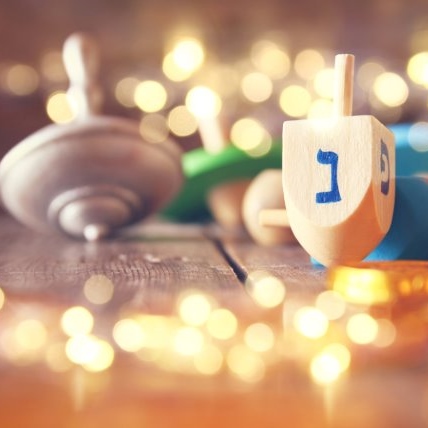click to dowload our latest edition
CLICK HERE TO SUBSCRIBE TO OUR NEWSLETTER


Published
4 years agoon
By
adminTALI FEINBERG
Eating latkes also has an interesting history – it’s not just by chance that we eat potato pancakes fried in oil. “Potatoes were embraced by the peasants of Europe in the late 18th century due to a series of crop failures and famine. Potatoes safeguarded them against the unpredictable rise and fall of grain prices and kept them healthy and full,” says Aly Miller on Jewish food website The Nosher.
She says that according to food historian Gil Marks, two types of Chanukah food is on record in the 14th century: dairy food and fried food. “Sephardic Jews made many variations of fried sweets for the holiday, while Ashkenazi Jews in Northern Europe made fried blintzes and doughnuts. Italian Jews in the 15th century made fried ricotta-cheese pancakes (cassola) which were arguably the first latkes,” she writes.
“Latke recipes changed from region to region, depending on what resources were plentiful and accessible. In Northern and Eastern Europe, for example, schmaltz (chicken fat) or duck fat was used in place of oil. Along with cheese latkes, buckwheat latkes were the norm. Roasted goose, a seasonally anticipated dish, was also traditional on the Ashkenazi table.”
Potatoes were particularly abundant at this time of year in Eastern Europe, so potatoes fried in oil became the tradition. When people went to South Africa, America, and other places, they took that tradition with them.
A fascinating fact is that for Jews from North African countries (Yemen, Algeria, Morocco, Libya and Tunisia), “the seventh night of Chanukah is set aside as a women’s holiday”, says Simon J. Brenner, a distinguished professor of American studies and folklore at Penn State University.
According to him, that night commemorates Hannah, sometimes spelled Channah, whose story is told in the Book of Maccabees. According to the text, Hannah and her seven sons defied the Syrian Greeks who ruled Jerusalem at the time, and she and her sons were killed for refusing to give up their beliefs. This is also known as Chag Ha’Banot (the Daughters Festival).
Jews in India sometimes light their Chanukiot with wicks that have been dipped in coconut oil to honour the miracle of the oil, similar to traditions for Diwali, says Brenner. Also, in India, some Jews replace latkes with a food called burfi, a confectionary made with condensed milk and sugar.
Doughnuts are a hugely popular way to celebrate Chanukah in Israel and around the world. In Morocco, these are called sfenj, and are made with the juice and zest of an orange.
In Santa Marta, Columbian Jews eat a traditional dish called patacones, which is plantain slices fried in oil. Iranian Jews make an egg fritter called kuku savri.
In Alsace, a region of France, “double-decker” Chanukah menorahs are common, with space for 16 lights. The two levels, each with spots for eight candles, allow fathers and sons or mothers and daughters to join together as they each light their own candles in one single menorah.
Along with cassola, Italian Jews make a lightly sweetened, olive-oil infused, honey-covered treat called precipizi, and in Turkey, people eat oil-fried fritters known as burmelos. In Istanbul, Jews also sing a song commemorating the eight menorah candles called Ocho Candelas.
Chanukah is now publically celebrated in countries where Jews were persecuted in the past. The Chief Rabbi of Moscow lights a giant menorah in the heart of Moscow, in Manezh Square near the Kremlin, and public menorahs are lit in cities throughout Russia.
Since 2003, a large menorah is lit on the first night of Chanukah in front of the Brandenburg Gate in Berlin, Germany. Given that it was once the site of anti-Semitic rallies during the Nazi regime, the event not only marks the beginning of a religious holiday, but symbolises the changes that have occurred in German society since the end of World War II.
In America, an underwater menorah was installed at an aquarium in Atlanta, and a “national menorah” is lit near the White House in Washington.
In Israel, some families visit the sites of the events that inspired Chanukah in Modi’in and Jerusalem. Modi’in is mentioned in the Mishnah as home to the Maccabees, and is also where the oldest shul in Israel was discovered. Each year as part of the festivities, nearly 20 families open their homes in Modi’in for special public menorah-lightings and Chanukah-themed activities and lectures, all linked to the city’s central role in the Chanukah story.
One almost universally practiced tradition involves displaying your menorah or Chanukiah for people to see the lights burning. Historically, in countries like Morocco and Algeria, and even some communities in India, it was customary to hang a menorah on a hook on a wall near the doorway on the side of the door across from the mezuzah. In Israel, some neighbourhoods even have spaces cut into the sides of buildings, so Jews can proudly display their Chanukiot to the world.
